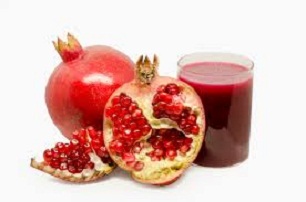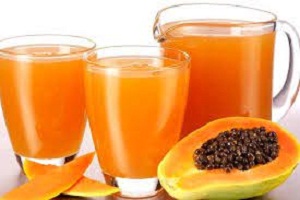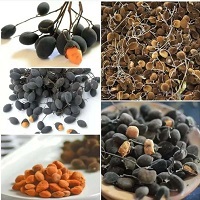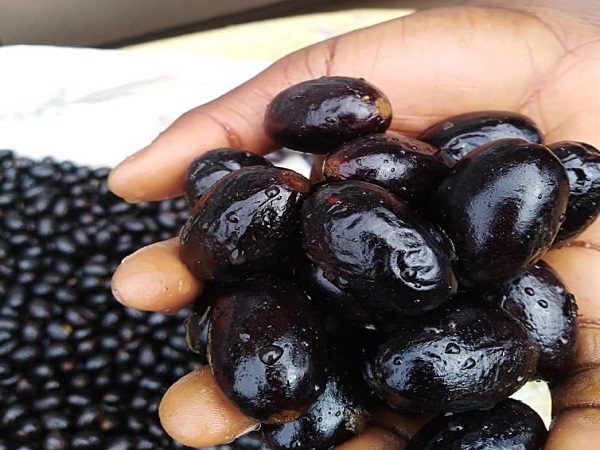What is a Pomegranate? Nutrition | Benefits | How to Eat
The Delicious Pomegranate
The pomegranate (punica granatum) is a fruit-bearing deciduous shrub in the family lythraceae, and subfamily punicoideae.

The “pome” in pomegranate is gotten from the Latin word for apple, and the “granate” from the word for seed.
However, “granate” may have come from the Old French word for “grenat”, which explains the deep red color of the fruit.
For you >>>> Moringa Super Nutritional Benefits You Should Know
What Is a Pomegranate? And How Did It Become a Super-food?
This fruit is among the healthiest fruits on the globe and it contains a range of beneficial plant compounds, incomparable by other foods.
Undoubtedly, they are beautiful. Whether whole or simply a container of fresh ruby-red arils, pomegranates have a propensity to grab your eye as you’re walking through the fruit aisle
It is a tree. Different parts of the tree and fruit are used to make medicine. A lot of cultures use it as folk medicine.
They are used also in baking, cooking, meal garnishes, juice blends, smoothies, and alcoholic beverages such as cocktails and wine.
Origin of Pomegranate
Pomegranate originates from Iran. It is mainly cultivated in Mediterranean counties, parts of the United States, Afghanistan, India, Russia, China, and Japan.
The fruit is in season in the Northern Hemisphere from September-February and in the Southern Hemisphere from March-May.
The Nutrition Facts: Calories, Carbs, Sugar, and More
The arils are packed with nutrients and antioxidants, elements that can assist to prevent or delay damage within the cells.
According to the U.S. Department of Agriculture guidelines,
- ½ cup serving offers:
- 72 calories
- 27 grams (g) carbohydrates
- 89 g sugar
- 5 g fiber (14 percent daily value, or DV)
- 205 milligrams (mg) potassium (about 5 percent DV)
- 9 mg vitamin C (about 10 percent DV for men, 12 percent DV for women)
- 3 micro-grams (µg) vitamin K (about 18 percent DV)
- 33 µg folate (about 8 percent DV)
Health Benefits of Pomegranate
Research suggests that this tree in its various forms offers the following benefits:
- Assists in protecting against heart disease
- Lowers high blood pressure
- Contains anti-inflammatory properties
- Helps with erectile dysfunction (ED)
- Protection against certain types of cancer, including prostate cancer
- Good Food for Weight Loss?
There has not been much research showing that this fruit contribute to weight loss
But, pomegranates are part of a healthy diet and may aid in weight loss efforts because they contain fiber, which contributes to feelings of fullness. You may finish off eating less as a result and could, therefore, lose weight.
Even though there are many hyped benefits of pomegranates, stronger research is needed to confirm them.
How to Eat a Pomegranate: How to Cut, Open, Peel, and De-Seed a Pomegranate
If you’ve ever wondered how to open a pomegranate, this article is for you!
Below you will learn how to cut, peel a pomegranate, and de-seed it, with no mess or wasted seeds!
- Firstly, you need to find the ripest pomegranates – those whose peels are beginning to crack open, their plump, ripe seeds increasing beyond the peel’s ability to contain them.
How to Eat a Pomegranate
Some people wonder “Do you eat pomegranate seeds?” and the answer is yes! The task is on how to open and de-seed them.
How to Cut a Pomegranate
Pomegranate juice will stain, so you have to be extremely careful while removing them.
Below is a step-by-step guide on how to eat a pomegranate and commendably open it – which, if done well, results in not one broken seed, and takes hardly any time at all.
Prep time: 5 minutes
Ingredients
- 1 pomegranate
Method
- Firstly, make a thin slice on the bottom of the pomegranate: With a sharp knife, slice 1/4-inch off of the stem end of the pomegranate and place the pomegranate cut side down on the cutting board to stabilize it.
- Secondly, cut around and remove the crown of the pomegranate: Use a paring knife to cut a circle, at a shallow angle, around the crown of the pomegranate, cutting it out.
- Thirdly, make shallow, vertical cuts along the ridges on the outside of the pomegranate:
- Then, pry open the pomegranate: Use your fingers to gently pry open the pomegranate. It should open easily, exposing the seeds (more accurately called arils).
- Similarly, pry the seeds away from the peel and membranes:
- Lastly, once you are done, skim the membranes from the top of the water, and strain the seeds from the water.
Put the seeds into a serving bowl and munch away. Eat immediately or store chilled in an airtight container for 3-4 days.
How to Make Juice from Pomegranate Seeds
Simply pulse a cup at a time in a blender, just enough to break the seeds, and then push the juice through a fine sieve.
Note
- If you over-blend, the aril will become bitter, thus pulse a few times and strain.
- Then, add sugar (optional) to the desired sweetness level.
- 2 large pomegranates will generally yield 1 cup of juice.
- Pomegranates are acidic and will react with metals such as or carbon steel or aluminum.
How to Freeze Pomegranate Seeds
- Once you have de-seeded the fruit, ensure the seeds are dry before freezing.
- Then, arrange them in a single layer on a rimmed baking sheet lined with wax paper.
- After that, place in the freezer for 2 hours or until frozen and then, put them into a freezer bag or container and store them in the freezer.
Side Effects & Safety
The juice is likely safe when taken by mouth for most people do not experience side effects.
Pregnancy and Breast-Feeding Women
Though there is not enough consistent information about the safety of using other forms of this fruit, such as pomegranate extract.
However, the juice is possibly safe for pregnant and breastfeeding women
FAQs and the Answers to them
Q: Is it safe to eat the seeds?
A: Yes. The arils (which are the white seeds plus the juice around them) are the only part that most people eat.
Q: Are pomegranates fruit?
A: The pomegranate is a fruit that is made up of hundreds of edible seeds called arils.
They are rich in fiber, minerals, vitamins, and bio-active plant compounds; however they also contain some sugar.
*Writing this article, took me down the memory lane of how it all started.


